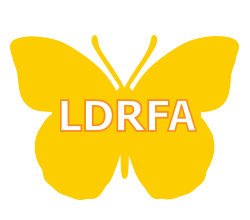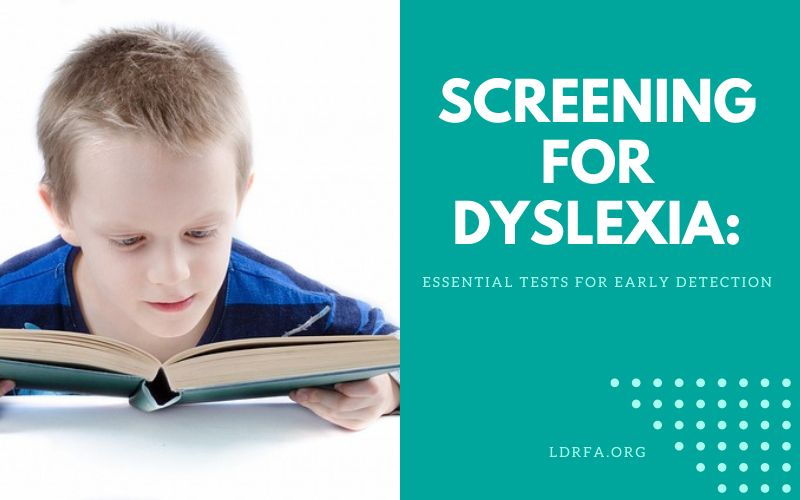Introduction
When a child is struggling with reading, it’s important to identify the underlying cause of their difficulties. Dyslexia is a common learning disorder that affects a child’s ability to read, spell, and comprehend written language. Early detection and intervention are crucial in helping dyslexic children overcome their challenges and succeed academically. To determine if a child has dyslexia, a comprehensive evaluation is necessary. This evaluation involves a series of tests that assess various aspects of language and reading skills. In this article, we will discuss the essential tests for screening dyslexia and their importance in early detection.
Table of Contents
ToggleThe Role of Evaluation in Dyslexia Diagnosis
Evaluation plays a vital role in diagnosing dyslexia. It is a process of gathering information to identify the factors contributing to a student’s difficulties in learning to read and spell. The evaluation begins with gathering information from parents and teachers to understand the child’s development and educational experiences. It then progresses to administering tests to identify strengths and weaknesses that lead to a diagnosis. The evaluation process also helps develop recommendations and intervention plans tailored to the child’s specific needs.
Why is Evaluation for Signs of Dyslexia Important?
An evaluation is crucial for three main reasons:
1. Diagnosis
An effective evaluation aims to identify the likely source of the reading difficulties and rule out other common causes. It helps determine if the student’s profile of strengths and weaknesses aligns with the definition of dyslexia. By diagnosing dyslexia, educators can better understand the underlying challenges and provide appropriate support. In addition, assessing English learners (ELs) from diverse cultural and linguistic backgrounds for learning difficulties is becoming more challenging. Teachers often find it difficult to determine whether such students struggle with academics and literacy because they are learning a new language, have a learning disability, or are affected by other factors. Incorrectly identifying Els who have learning disabilities can result in them missing essential educational support. In contrast, some ELs could be incorrectly labeled as having learning disabilities, leading them to unnecessarily be placed in special education.
2. Intervention Planning
After a diagnosis is made, an effective evaluation helps develop a focused remedial program. Dyslexic students require specialized instruction to make progress in reading. This instruction should start at the student’s current level of reading skill development, rather than their grade level. By identifying specific weaknesses, an evaluation guides parents and teachers in determining where reading and spelling instruction should begin.
3. Documentation
An evaluation serves as documentation of a student’s learning disability history. It is essential for determining eligibility for special services, including special education. Additionally, documentation is crucial for obtaining accommodations on college entrance exams or in the workplace.
When Should a Child Be Evaluated?
Early detection of dyslexia is crucial for effective intervention. It is possible to identify potential reading problems in young children even before they experience reading failure. Screening tests should be used with all children in a school, beginning in kindergarten, to identify those at risk for reading difficulties. Also, it’s equally important to provide education to both parents and teachers about the indicators of dyslexia. Such knowledge can empower them to spot potential issues early on and seek necessary evaluations. It’s also important to adopt a multidisciplinary method. Applying the expertise of various professionals — including psychologists, speech-language pathologists, reading specialists, educators, etc. — to ensure a holistic and effective approach to evaluation and intervention.
Areas to Assess in Dyslexia Evaluation
A comprehensive evaluation for dyslexia should cover various areas related to reading and language skills. These areas include:
1. Phonological Awareness
Phonological awareness refers to a child’s ability to recognize and work with the sounds within spoken language. This skill is crucial for learning to link letters to sounds for reading and spelling. Tests that assess phonological awareness measure a child’s ability to blend sounds, segment words, and manipulate sounds within words.
2. Decoding
Decoding is the ability to read unfamiliar words by applying letter-sound knowledge and spelling patterns. Dyslexic individuals often struggle with decoding, which affects their reading accuracy and fluency. Tests that assess decoding skills require the child to read both real words and pseudowords (nonsense words) to evaluate their ability to apply phonics rules.
3. Reading Fluency and Comprehension
Reading fluency refers to the ability to read text accurately, quickly, and with appropriate expression. Dyslexic individuals often read slowly and struggle to maintain comprehension. Tests that assess reading fluency and comprehension measure how well a child can read aloud and comprehend written passages.
4. Rapid Naming
Rapid naming involves quickly and accurately naming common letters, numbers, objects, and colors. This skill is linked to reading fluency and the ability to retrieve phonological information automatically. Tests that assess rapid naming skills evaluate a child’s speed and accuracy in naming stimuli.
5. Phonological Processing
Phonological processing refers to the ability to think about, remember, and sequence the sounds in words. Dyslexic individuals often have difficulty identifying, pronouncing, or recalling sounds. Tests that assess phonological processing skills focus on these abilities and help identify weaknesses in phonological awareness and memory.
6. Vocabulary Knowledge
Vocabulary knowledge plays a crucial role in reading comprehension. Dyslexic individuals may have difficulties in learning new words and understanding their meanings. Tests that assess vocabulary knowledge evaluate a child’s ability to understand and use age-appropriate words.
7. Written Language Skills
Assessing a child’s written language skills is essential in evaluating dyslexia. Tests that assess written language skills measure a child’s ability to write sentences, paragraphs, and stories. These tests provide insights into a child’s spelling, grammar, and overall writing proficiency.
Essential Tests for Dyslexia Screening
Based on the information gathered from the reference articles, here are some essential tests recommended for screening dyslexia:
1. Clinical Evaluation of Language Fundamentals -5 (CELF-5)
The CELF-5 assesses various aspects of oral language skills, including receptive and expressive language. It helps identify a potential gap between the two and provides insights into a child’s grammar usage, vocabulary, and language comprehension.
2. Comprehensive Assessment of Spoken Language (CASL)
The CASL evaluates higher-level language skills, such as figurative language and abstract reasoning. It is useful for assessing a child’s understanding of non-literal language and pragmatic language skills.
3. Comprehensive Test of Phonological Processing -2 (CTOPP-2)
The CTOPP-2 assesses phonological processing skills, which are essential for reading and spelling. It helps identify difficulties in phonological analysis and synthesis and provides insights into a child’s fluency in phonological tasks.
4. Expressive One-Word Picture Vocabulary Test -4 (EOWPVT-4)
The EOWPVT-4 measures expressive vocabulary skills and provides a quick assessment of a child’s vocabulary knowledge. It is useful for setting goals and monitoring progress in vocabulary development.
5. Gray Oral Reading Test – 5 (GORT-5)
The GORT-5 evaluates a child’s oral reading fluency and comprehension. It provides accurate scores and helps identify reading difficulties that may not be evident in other tests.
6. Gray Silent Reading Test (GSRT)
The GSRT assesses silent reading comprehension and provides insights into a child’s ability to understand written text without relying on oral reading. It measures higher-level reading skills and can help identify comprehension difficulties.
7. Rapid Automatic Naming/Rapid Automatic Stimulus (RAN/RAS)
The RAN/RAS test measures a child’s ability to quickly name common stimuli, such as letters, numbers, objects, and colors. It helps evaluate rapid naming skills, which are linked to reading fluency.
8. Test of Auditory Processing Skills (TAPS)
The TAPS assesses auditory processing skills, including auditory comprehension and reasoning. It provides information on a child’s ability to understand connected speech and can help determine the need for further evaluation for auditory processing disorders.
9. Test of Early Written Language (TEWL)
The TEWL evaluates a child’s early written language skills, including contextual writing and basic writing abilities. It provides insights into a child’s writing proficiency and can be supplemented with informal writing samples.
10. Test of Pragmatic Language (TOPL)
The TOPL assesses pragmatic language skills, including social language use and theory of mind. It helps identify difficulties in social communication and is a valuable tool for goal setting and IEP meetings.
11. Test of Written Language – 4 (TOWL-4)
The TOWL-4 evaluates various aspects of written language skills, including spelling, vocabulary, and narrative writing. It provides scoring criteria for assessing writing proficiency and can be supplemented with additional writing samples.
12. Test of Written Spelling – 5 (TWS-5)
The TWS-5 assesses a child’s spelling skills and helps identify difficulties in spelling accuracy. It can be supplemented with contextual-based writing tasks to further evaluate a child’s spelling abilities.
13. Woodcock Reading Mastery Test (WRMT)
The WRMT measures reading skills, including word identification and sight word recognition. It helps identify reading difficulties and provides insights into a child’s reading proficiency.
14. Word Test
The Word Test assesses higher-level semantic skills, including multiple meanings. It is useful for evaluating a child’s understanding of words and their usage in different contexts.
It’s important to note that these tests are just a selection of the many tests available for screening dyslexia. The specific tests used may vary depending on the evaluator and the child’s individual needs.
Conclusion
Screening for dyslexia is a crucial step in early detection and intervention. The tests discussed in this article assess various aspects of language and reading skills, helping identify strengths and weaknesses in dyslexic individuals. By conducting a comprehensive evaluation, educators and clinicians can develop targeted intervention plans and provide the necessary support for dyslexic children. Early detection and intervention are key to helping dyslexic individuals overcome their challenges and achieve academic success.
Resources
http://dyslexiahelp.umich.edu/professionals/learn-about-dyslexia/diagnosing-dyslexia/tests
https://mind.help/assessments/dyslexia-test/
https://www.ncbi.nlm.nih.gov/pmc/articles/PMC10219499/


